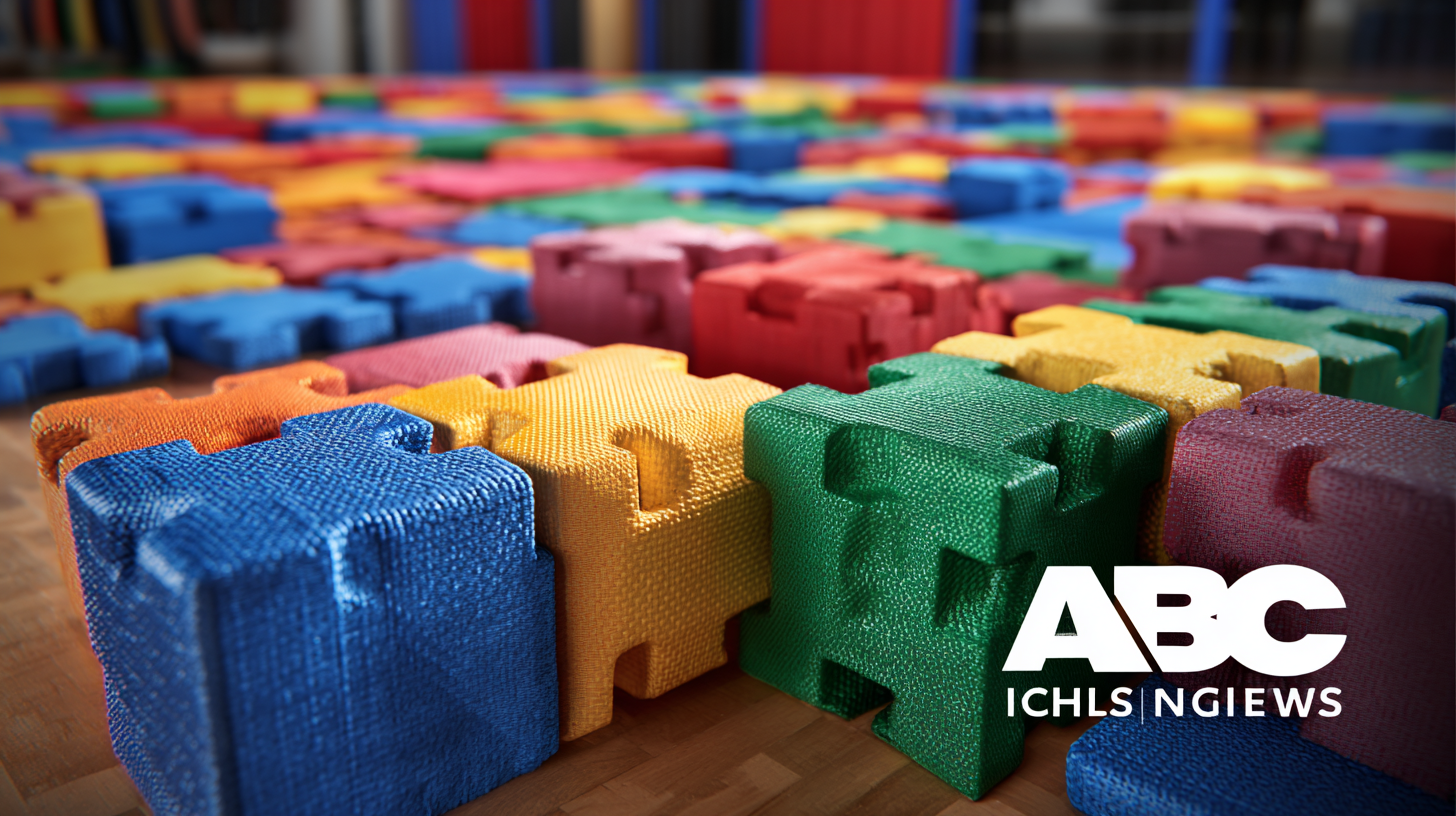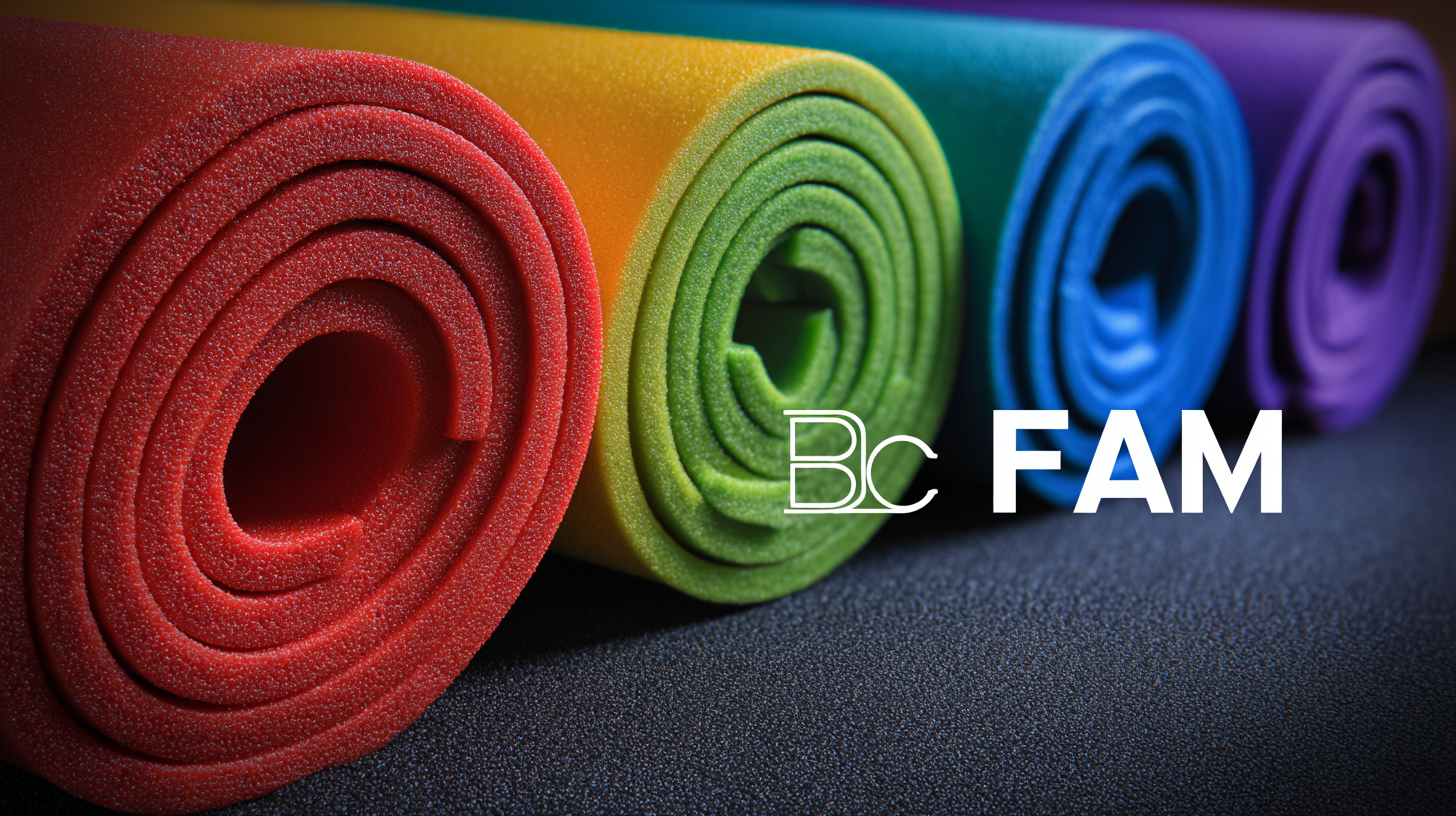In the competitive landscape of child safety and play areas, "Abc Foam Mats" have become a staple due to their versatility and protective qualities. However, as parents and educators seek optimal solutions, it's essential to consider alternatives that not only meet safety standards but also enhance play experiences. According to a recent market analysis by IBISWorld, the global market for children's foam mats is expected to grow at a CAGR of 5.2% over the next five years, indicating a rising demand for innovative designs and materials. With industry insights suggesting that performance features—such as non-toxicity and ease of cleaning—play a crucial role in consumer choices, exploring the top five alternatives to Abc Foam Mats can illuminate potential advantages. This blog aims to dissect these options, providing valuable data to help you make an informed decision for your little ones’ safe and enjoyable play environments.

As we approach 2025, the foam mat industry is brimming with innovation, introducing cutting-edge technologies designed to enhance performance and user experience. Novel materials have emerged that not only improve durability but also offer superior grip and cushioning. These advancements allow for greater versatility, making foam mats suitable for a range of applications, from home workouts to professional sports training.
Manufacturers are also focusing on eco-friendliness, developing mats that utilize sustainable materials and production methods. This shift towards environmentally responsible products is crucial as consumers become more conscious of their ecological footprints. Additionally, the integration of smart technology in foam mats is on the rise, with features such as built-in sensors that monitor performance and provide real-time feedback. These innovations are set to revolutionize the way we interact with foam mats, ensuring that they meet the evolving needs of fitness enthusiasts and athletes alike.
When it comes to selecting the best foam mat for your practice or workout, it’s essential to analyze the performance metrics that distinguish various alternatives. The top five contenders often bring unique attributes to the table, warranting a comparative analysis. Key performance indicators such as cushion, grip, durability, and eco-friendliness play a critical role in evaluating their effectiveness. For instance, some mats may excel in cushioning, making them ideal for high-impact activities, while others may focus on firmness and stability for balance-based practices.
Additionally, the materials used in foam mats can significantly impact their performance. Understanding the construction—whether it involves traditional synthetic materials or innovative natural fibers—can help users make informed decisions aligned with their values and priorities. The rise of eco-friendly options reflects a growing awareness among consumers, similar to trends observed in other product categories. As the market continues to evolve, staying informed about the latest alternatives with enhanced performance metrics will undoubtedly guide consumers toward making the best possible choice for their fitness needs.
| Alternative Foam Mat | Material | Thickness (inches) | Weight (lbs) | Water Resistance | Durability (cycles) |
|---|---|---|---|---|---|
| Eco-Friendly Foam Mat | EVA | 1.5 | 4.5 | Yes | 50,000 |
| High-Density Foam Mat | PU | 2.0 | 5.0 | No | 75,000 |
| Interlocking Puzzle Mat | EVA | 0.5 | 3.0 | Yes | 30,000 |
| Extra Thick Gym Mat | PVC | 3.0 | 7.0 | No | 100,000 |
| Portable Travel Mat | TPE | 0.75 | 2.5 | Yes | 25,000 |
When it comes to selecting the best foam mats, consumer preferences play a crucial role influenced by several key factors. According to a recent industry report by Market Research Future, over 60% of consumers prioritize safety and comfort when choosing foam mats, especially for children’s play areas. This preference underscores the demand for mats that not only provide cushioning but also meet rigorous safety standards, such as those outlined by ASTM International.

Another significant factor influencing foam mat selection is durability. A survey conducted by IBISWorld revealed that nearly 48% of consumers consider the longevity of foam mats when making purchasing decisions. Buyers are increasingly looking for products that can withstand heavy usage without compromising performance. As a result, manufacturers are innovating with high-density foams and reinforced materials, which have shown to extend the lifespan of these mats by up to 30%, according to performance data from the Foam Association. This shift in consumer priorities is shaping the marketplace, pushing brands to focus on quality alongside cost-effectiveness in order to meet the evolving needs of their clientele.
As the demand for eco-friendly solutions rises, the foam mat industry is witnessing significant shifts towards sustainability. According to a recent industry report by Grand View Research, the global eco-friendly foam market is expected to reach USD 51.6 billion by 2025, driven by increasing awareness regarding environmental issues and the rising preference for sustainable materials. This growth is reflected in the production of foam mats made from natural and recycled materials, such as plant-based polyethylene and thermoplastic elastomers, which minimize the carbon footprint compared to conventional foam products.
Moreover, market trends indicate that consumers are increasingly seeking products that contribute to a healthier lifestyle. A survey conducted by Statista found that nearly 65% of consumers prioritize sustainability when selecting fitness equipment. This shift in consumer behavior is prompting manufacturers to innovate and introduce biodegradable and recyclable foam mats. Companies that integrate eco-friendly practices have reported a 20% increase in sales over the last year compared to their less sustainable counterparts. As the foam mat industry embraces these changes, it is clear that sustainability is no longer just an option but a necessary strategy for future growth.

In today's fast-paced work environment, selecting the right foam mat is paramount to ensuring comfort and productivity. According to a 2022 industry report by the National Floor Safety Institute, workplaces that utilize high-quality foam mats report a 30% reduction in employee fatigue, leading to enhanced performance and lower turnover rates. As the demand for adaptable workspaces increases, investing in the right foam mat can significantly future-proof your office setup against evolving ergonomic needs.
When choosing a foam mat, it's essential to consider factors such as thickness, material composition, and intended use. A notable tip is to opt for mats with anti-fatigue features and proper cushioning to support employees standing for long periods. Additionally, look for mats with non-slip surfaces to maintain safety standards in busy environments. According to the American Society of Interior Designers, 78% of employees expressed that improved comfort through ergonomic solutions positively influenced their job satisfaction.
Furthermore, with the rise of flexible workspaces, versatile foam mats that can be easily moved or reconfigured are increasingly in demand. Selecting modular foam mats can offer the adaptability required for your changing workspace layout. Investing in performance-driven mats not only enhances employee well-being but also contributes to a positive workplace culture, ultimately improving overall productivity.
